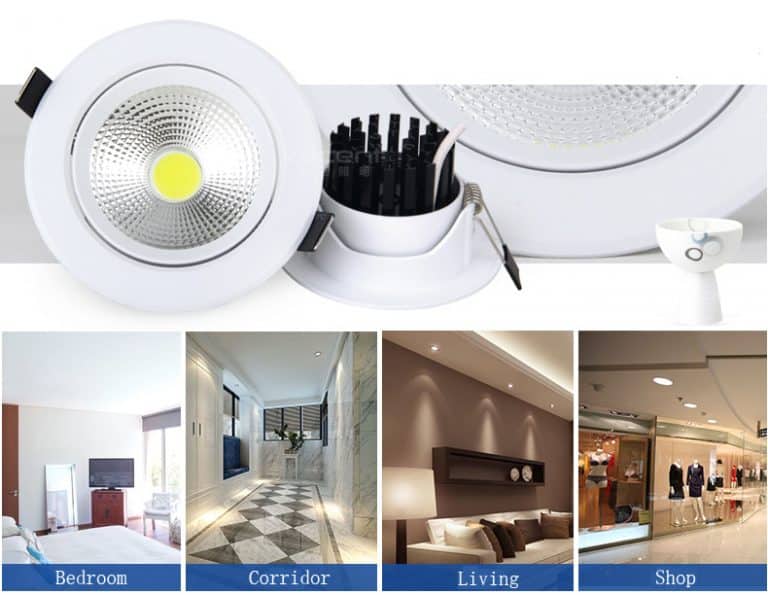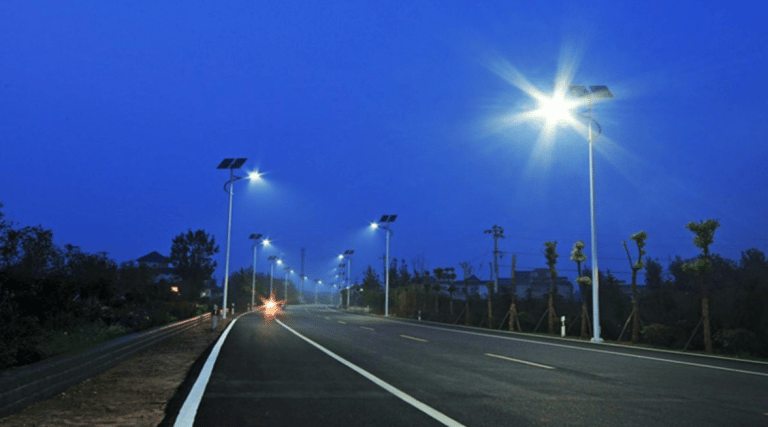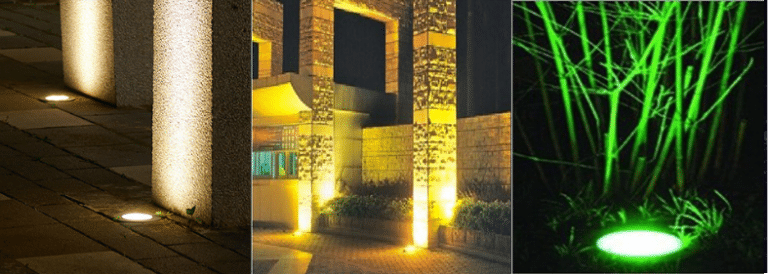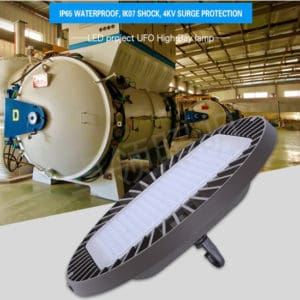As the latest lighting solution, the application of LED lamps has been very extensive, and the trend of replacing other light sources is becoming more and more obvious. But it is undeniable that, as far as the current technology is concerned, the flicker of LED lamps is generally pure. Today we will talk about those things about the strobe of LED lamps.
What is LED light flicker?
In the standard sense. The strobe is to look at the screen of another appliance in the screen of one appliance, and the screen of the other appliance will have a bright line moving from the bottom of the screen to the top, and then appearing from the bottom. If this goes on indefinitely, it gives us the feeling that images or lights are flickering.
In layman’s terms. Stroboscopic, flickering with frequency, the rapid and repeated change of light over time is called stroboscopic, and the direct feeling is that the image is beating and unstable. The essence of the stroboscopic light source of LED lamps is the fluctuation of luminous flux. Driven by AC or pulsed DC, the luminous flux, illuminance, or brightness changes correspondingly with the periodic change of the current amplitude (flickering of light and shadow).
How to judge whether LED lamps are flickering?
In real life, without professional instrument testing, the most direct and convenient way to determine whether LED lamps are strobes is to use a mobile phone to take pictures or videos of the lit LED lamps. Then this is the strobe LED light fixture.
The strobe of LED lamps is generally invisible to the naked eye. Professional methods require the use of professional instruments to see its spectrum. Many LED lamps on the market currently emit blue light through the chip to excite yellow phosphors to form white light. The lower the wavelength, the stronger the firing ability.
Why can’t we see the strobe of LED lamps?
Most people can perceive flicker below 50 or 60 Hz significantly, and when the frequency reaches a certain level, the human eye perceives the flickering light as a continuous source, this frequency is called the “critical flicker frequency” (CCF).
CCF varies from person to person and in different conditions for the same person, but most people have CCF values that do not exceed 100 Hz. Many people feel uncomfortable with strobes below 50/60 Hz, and some people are still uncomfortable between 50-100 Hz, so how much frequency does it take to eliminate this effect? It varies from person to person, some say 160 Hz, 200 Hz, and some say 500 Hz, but the industry basically thinks that it is no problem to reach kilohertz (KHz).
The human eye is a very complex system, and the individual differences are very large. For most people, light flickering below 80Hz can be detected. At this time, the human eye can perceive the light and dark changes, and the flickering frequency below 80Hz is also called. for visible flicker. Visible strobe is unacceptable for general lighting or displays.
For the strobe above 80Hz, the human eye is not easy to detect, but it has a great impact on the human eye’s spatial perception. For example, the moving object is regarded as a series of still images, that is, the stroboscopic effect.
Are there any LED lamps/light sources that do not flicker?
No flicker in the absolute sense is actually impossible. The lighting industry standard requires 3125Hz stroboscopic for qualified LED lighting products. From a professional point of view, the exact name of “flicker-free” is “undetectable stroboscopic”.
Why do LED lamps flicker?
Most light sources have stroboscopic, but the degree is different. The flicker of LED lamps is largely not the problem of the LED chip itself but comes from the LED drive power supply and dimmer. The common causes of flicker are:
- Inferior LED driver. It cannot reduce the “voltage and current output ripple” generated by the LED driver in the process of “AC to DC”, and the power supply ripple is very serious and very inappropriate. Without suitable electronic circuits, such as ballasts, drivers, or power supplies, the light source will produce stroboscopic, and the greater the fluctuation of the output luminous flux, the more severe the stroboscopic.
- Inferior dimmer. It has poor compatibility or chooses low-frequency PWM dimming. For smart lighting products such as smart downlights, dimming is an essential function, and dimming is just another cause of strobe. When products are loaded with dimming features, flicker tends to be further exacerbated. Especially when the dimming is dark, the fluctuation depth is relatively large. Therefore, for lighting products that have a dimming function or claim to be connected to a dimming controller, their stroboscopic performance should be measured when the dimming is the brightest and when the dimming is darker.
What is the harm of stroboscopic LED lamps?
Studies have shown that different degrees of stroboscopic flicker will affect people’s physiology and psychology. Of course, most of them are negative, such as damage to eyesight, irritability, and induction of epilepsy. for example:
1. For sports venues that need lighting at night, such as billiard halls, table tennis halls, badminton halls, tennis halls, etc., the sports spheres cannot be seen clearly due to the flickering lights;
2. In the case of photography and videography, if the lighting with flicker is used, it will be unavoidable to avoid dark areas and black scroll bars during photography;
3. Including strain fatigue, eye strain, blurred vision, migraine headaches, and decreased vision; 4. The effect of low-fluctuation and high-frequency flickering is not obvious, and migraine or severe headache may occur within a few minutes, often accompanied by symptoms such as nausea and visual disturbances.
How to avoid LED lamp flickering?
Do not turn down the brightness of dimming lamps to very low
When choosing dimming LED lamps, many people often prefer to use LED lamps with the highest power, thinking that the power can be adjusted down at any time, but this is actually a lack of consideration, because the current dimming method of LED light sources generally adopts PWM For dimming, the LED is really on when it is powered on and off when it is powered off, so there is no so-called afterglow effect, it is really on and off.
This means that the same LED light, the higher the brightness, the higher the flashing frequency, the less harmful to people.
Therefore, in the early stage of the lighting design of the lighting project, we should try to avoid the use of high-power lamps and low-brightness scenes. For example, movie viewing scenes are naturally accustomed to low-light environments. At this time, it is more recommended to use low-power lamps, such as wall lamps, for ambient lighting, rather than simply dimming conventional ceiling lamps.
Buy a high-quality LED driver
For drivers like Tridonic, the rectifier devices behind them are relatively solid, and high-quality driver chips can greatly reduce the output ripple, thereby significantly improving the stroboscopic situation. For finished lamps with integrated lamps and lanterns, the manufacturer can also make requirements on the quality of the driver.
LED lighting products are driven by a constant voltage or constant current power supply from AC to DC (AC means alternating current, DC means direct current). Due to the wide variety of drivers, the strobe performance of each LED product is also different. In particular, some unscrupulous manufacturers use relatively simple drive circuits, such as AC LEDs, to save costs, and there will be a large stroboscopic problem.
Choose digital dimming
Analog dimming, such as phase-cut dimming, requires higher matching requirements for drivers and dimmers and is easily disturbed during the transmission of dimming signals. There will be a lot of digital dimming matching.

Hello, customers
My name is Ricky Wang, I’m the business manager of GRNLED. I have been in LED lights industry for more than 10 year. Feel free to contact us. I’m happy to provide you the best service and products.
Email: info@grnled.com | WeChat: ledfixture






